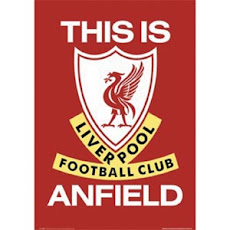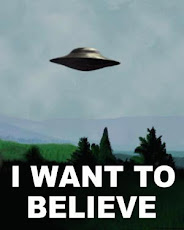
This
story appears in the Wednesday March 17, 2010 edition of the Business Mirror.
Part 4 The Skids
by rick olivares
There is nothing textbook about the formation of a national team. Each and every one has its own unique set of peculiarities, characters, and circumstances that add to the drama.
For the Smart Gilas Pilipinas National Team, well, even if patterned after the fabled Northern Consolidated Cement team of the 1980’s, there’s no template for it.
After Jakarta, the team made a triumphant return to the country. But the college basketball season was on and with only four players stayed behind to continue to train – Chris Tiu, Jayvee Casio, Mac Baracael, and Jason Ballesteros – as they had finished their schooling. The rest went back to their college teams while CJ Giles tried out for the Orlando Magic’s roster. In that time, Chris Lutz flew in for two weeks to work out and scrimmage with the team. Along with former UST Tiger Emerson Oreta who worked out with Gilas, they played a steady steam of exhibition matches and surprisingly did well beating a number of pro teams that had their full complement of players.
During most occasions, Gilas joined pro team Talk 'N Text in their regular practice sessions at the Moro Lorenzo Sports Center. In turn, Talk 'N Text was taught the crux of Toroman's system with the Serb presiding over practice while the Tropang Texters coach, Chot Reyes, graciously sat and observed on the sidelines. In essence, since they both had businessman tycoon Manny Pangilinan as their patrons, they were like brother teams. So the fight involving CJ Giles and TNT players a few weeks later seemed surprising but altogether a harbinger of things to come.
On the international front, national team duties were temporarily taken over by the Powerade team of all-pros that would compete in SEABA and FIBA Asia Men’s Basketball Championship in Tianjin, China.
The other collegiate members of Gilas, for five months, ran other systems and were used rather differently and by the time of their re-entry into the national squad, there was difficulty in assimilating oneself again. Never was this more evident than with Dylan Ababou who played the four-spot with UST (since they lacked a deep bench) and won the UAAP Most Valuable Award at that. With his return to the nationals, he looked lost and out of sync. He had bulked up in a different way that made him slower.
The team meanwhile picked up Japeth Aguilar who stirred a hornet’s nest when he was drafted number one over-all by the PBA yet refused to sign a contract with Burger King, the team that drafted him. Aguilar had played for Powerade and its coach Yeng Guiao who once mentored the 6’11” player’s father, Peter, when he was playing for Swift’s in the PABL.
Aguilar left the Ateneo Blue Eagles after two years to play for Western Kentucky in the US NCAA. There was hope that he could be the first pure Filipino to play in the NBA but injuries kept him from getting valuable playing time and as a result, with not many opportunities, he returned to the Philippines and to join Powerade in particular.
He has so much potential and possesses hops uncommon to local big men. But his skills and mental acumen for the game have not yet caught up. While in Tianjin, Guiao oft chastised him after losing focus on the floor: “You should have stayed with Ateneo. You would have learned more from Norman Black.”
Criticism isn’t new to Aguilar, but he found himself increasingly missing playing with his contemporaries rather than grizzled veterans. He sought to escape playing for Burger King and instead suit up for Gilas. It not only infuriated Burger King and PBA executives.
It isn’t uncommon for PBA draftees not to be signed up, but for a Number One Overall Pick to spurn a club was unheard of and downright unthinkable. The fact that Aguilar wanted to join Gilas gave rise to conspiracy theories with regards to the SBP where some believed that Executive Director Noli Eala was using the NSA and the national team to get back at them for his dismissal as league commissioner.
It was far from the truth but it wouldn’t be the first time the accusation was hurled against Eala.
In the meantime, Giles returned after an unsuccessful bid with Orlando. The deal with the American was, he could play for an NBA team provided that he plays in the requisite tournaments for Gilas.
Whether sound or not, it has never happened before that a candidate for naturalization, would commit to three years to the Philippine National Team. In the PBA, imports sign up anywhere from weeks to at most four months. So everyone was treading uncommon ground.
But Giles loved Manila. Maybe even too much because after a while he became a nocturnal creature and that put him on a collision course with Toroman who was a stern disciplinarian. Giles resented the constant scolding by the Serb who took affront at the American’s irresponsibility.
With the college basketball season winding down, Toroman verbally wished for the addition of three amateur standouts in Ateneo’s Rabeh Al-Hussaini, UE’s Paul Lee, and the University of Cebu’s Junmar Fajardo. Al-Hussaini was the only one who signed up while Lee, through UE Coach Lawrence Chongson, declined in order to concentrate on the Red Warriors’ PBL club, Cobra Energy Drink. Fajardo was a little more complex. His Cebuano handlers said that they wanted him to finish his schooling yet others wondered if their association with the disenfranchised BAP was the cause of the player’s unavailability for the SBP-sponsored national squad.
As much as Gilas was a three-year project, most, if not all the players’ contracts were not drawn up for the long haul. The national team’s composition was an ongoing process where players would be added while some removed either to stay in the national pool or to make way for other players. In spite of that knowledge, the players got along famously.
In the case of Ababou, the re-entry of the college players threw the rotation and system into chaos.
Gilas co-captain Mark Barroca returned earlier than expected after he left his FEU team following game fixing allegations by school officials. Gilas officials, led by Team Manager Butch Antonio, picked up a disconsolate Barroca on a day when the rains were falling and the last commissioner of the Metropolitan Basketball Association summed up the team’s recent troubles: “Gilas had become a refuge for the controversial and the unwanted.”
A dark cloud hung over Gilas and the rain that followed would turn into a deluge.









No comments:
Post a Comment